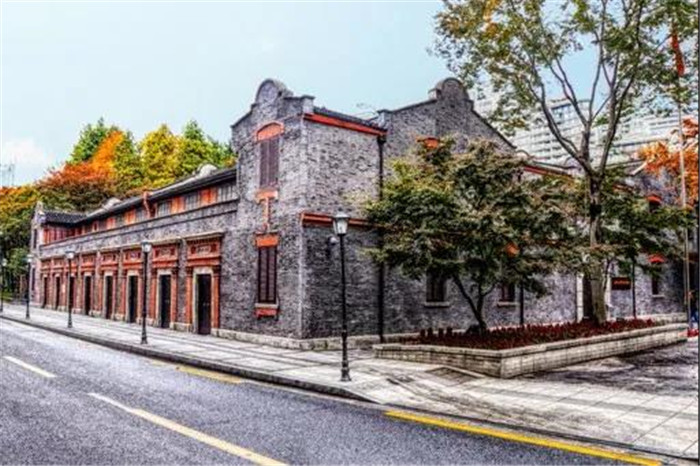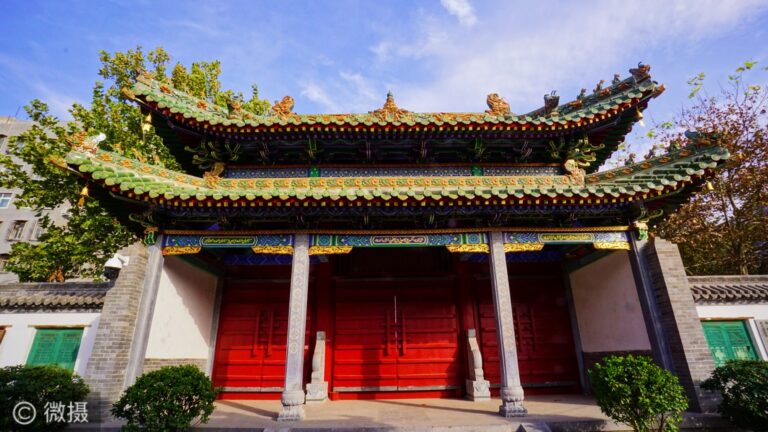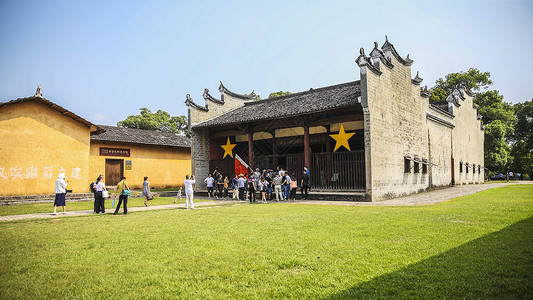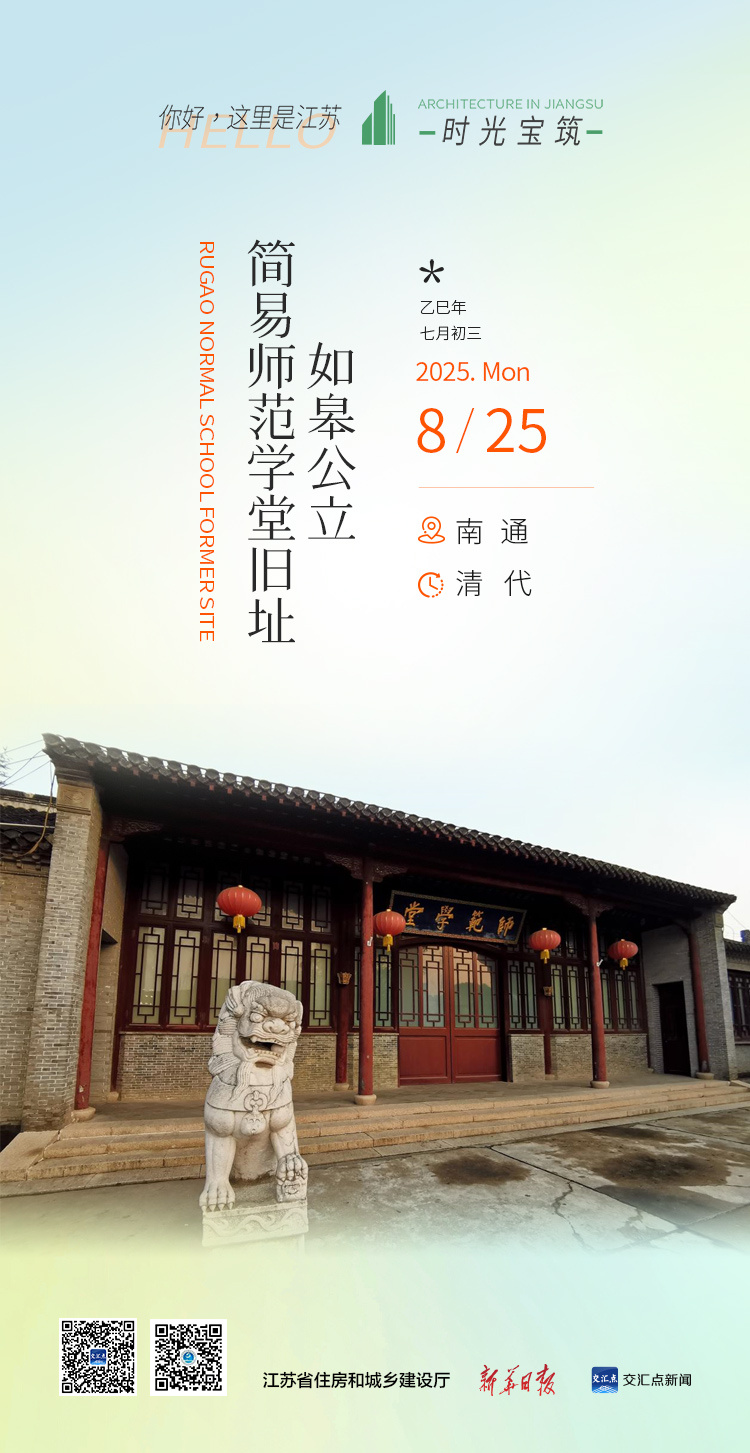Explore Karamay Kelamayi Yihaojing: Hidden Gems and Must-See Attractions in Xinjiang
An Essential Guide to Visiting Karamay Kelamayi Yihaojing
In This Guide
- An Essential Guide to Visiting Karamay Kelamayi Yihaojing
- The Rich History of Karamay Kelamayi Yihaojing
- Main Highlights: What to See at Karamay Kelamayi Yihaojing
- Planning Your Visit: A Practical Guide
- Tickets, Hours, and Booking
- How to Get There
- Local Cuisine and Accommodation
- Frequently Asked Questions
- Final Thoughts on Your Trip
Nestled in the heart of Xinjiang, Karamay has undergone a remarkable transformation from a bustling oil city into a vibrant travel destination. At the center of this metamorphosis lies Karamay Kelamayi Yihaojing, or the Karamay No. 1 Well, which holds the title of China’s first oil well. This iconic site not only signifies the dawn of the country’s petroleum industry but also serves as a testament to Karamay’s rich industrial heritage.
Visitors to Karamay No. 1 Well will encounter more than just a historical landmark; they will step into a narrative woven with the threads of innovation, resilience, and the spirit of exploration. The well itself, flanked by the stunning “Big Oil Bubble” sculpture, creatively encapsulates the essence of oil production, symbolizing the fluidity and movement inherent in the industry. The surrounding area has been thoughtfully curated to provide an engaging experience, blending art with history and offering insights into the evolution of oil extraction techniques.
This site is a must-visit for those seeking to explore the intersection of nature and industry. Karamay, with its stark landscapes, unique geological formations, and burgeoning tourism infrastructure, invites travelers to discover the stories etched in its very soil. Whether you are a history buff, a photography enthusiast, or someone seeking adventure, Karamay No. 1 Well stands as a shining beacon of the region’s past and a gateway to its promising future.
The Rich History of Karamay Kelamayi Yihaojing
Karamay Yihao Well, known as Karamay No. 1 Well, holds a significant place in the annals of Chinese industrial history. This site marks the birth of the Karamay Oilfield, which was the first major oil discovery in the People’s Republic of China, officially recognized when the well was drilled in 1955. The discovery was not just a pivotal moment for Karamay but also for the entire nation’s energy landscape, as it transformed China into a prominent oil-producing country.
Initially, Karamay was a remote and desolate area in Xinjiang province, characterized by harsh desert conditions and limited infrastructure. The discovery of oil fundamentally changed its trajectory. Following the drilling of Yihao Well, the Karamay Oilfield was developed, which subsequently led to the establishment of the city of Karamay itself. The well quickly became a symbol of progress and industrial development, attracting workers, engineers, and their families, who came to capitalize on the burgeoning oil industry.

Karamay Kelamayi Yihaojing.
In the early years, the oil extracted from Karamay was primarily used to support the rapidly growing industrial needs of China, particularly during the economic reforms of the late 20th century. Over the decades, the region evolved from a simple oil extraction site into a sophisticated industrial hub, integrating modern technology and practices into its operations.
To commemorate its historical significance, the site of Karamay Yihao Well has been transformed into a cultural and tourist attraction. The area around the well features a striking stainless steel sculpture that symbolizes the oil bubbles that emerge from the ground, encapsulating the essence of Karamay’s oil legacy. Visitors can explore the preserved equipment from the original well and enjoy the artistic representation of Karamay’s transformation from a barren land to a thriving industrial city.
Today, Karamay Yihao Well stands not only as a reminder of the city’s industrial roots but also as a testament to the resilience and ingenuity of the people who have contributed to its development. This site has become an essential part of the narrative of Karamay, highlighting the evolution of an oil town into a modern city that embraces tourism while celebrating its rich industrial heritage. With its blend of historical significance and contemporary cultural offerings, Karamay Yihao Well continues to attract visitors eager to understand the story of China’s oil revolution.
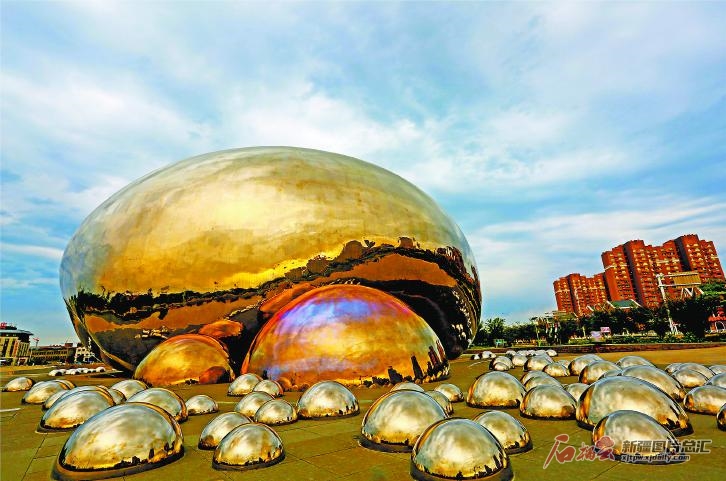
Karamay Kelamayi Yihaojing.
Main Highlights: What to See at Karamay Kelamayi Yihaojing
Karamay Kelamayi Yihaojing, also known as the First Oil Well of Karamay, stands as a monumental testament to China’s oil history and industrial evolution. Here are some key highlights of this remarkable site:
Historical Significance
This site marks the birthplace of the Karamay Oilfield, which was the first major oil field discovered in China in 1955. The discovery of the first oil well not only transformed Karamay into a vital oil-producing city but also played a crucial role in the development of China’s petroleum industry.
Unique Architectural Design
The centerpiece of the Karamay Yihaojing is the striking “Big Oil Bubble,” a large stainless-steel sculpture that symbolizes the oil industry. Standing 15 meters tall and 28 meters in diameter, the sculpture features four entrance archways and is surrounded by smaller sculptures, all reflecting various forms of oil. This modern art piece creatively captures the essence of Karamay’s rich petroleum heritage.
Educational and Cultural Experience
Visitors to Karamay Yihaojing can explore an exhibition showcasing the equipment used in the original oil extraction processes. This provides a fascinating glimpse into the historical methods of oil production, making it an educational experience for those interested in industrial history.
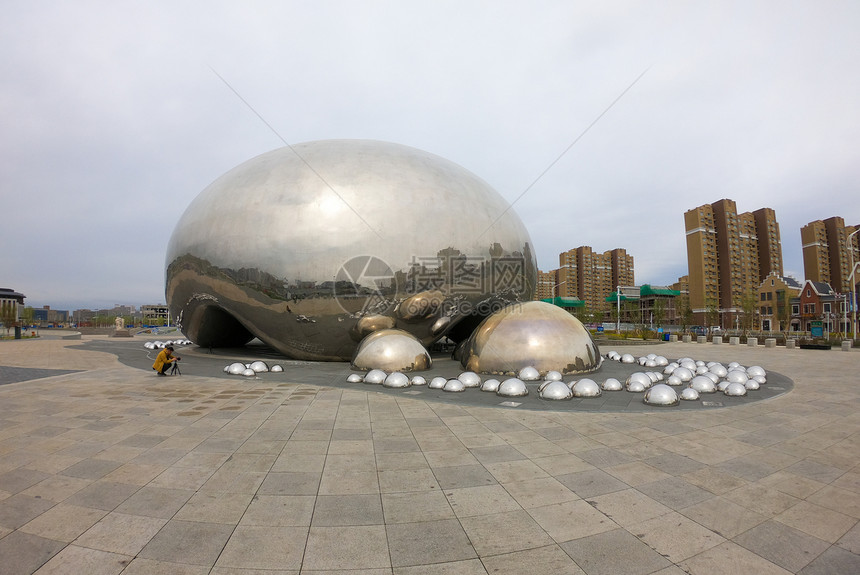
Karamay Kelamayi Yihaojing.
Free Admission
One of the appealing aspects of Karamay Yihaojing is that it offers free entry to visitors. This makes it an accessible destination for both tourists and locals to appreciate the historical significance and artistic representation of the oil industry.
Ideal for Photography
The unique design of the Big Oil Bubble and its surrounding installations present a visually striking backdrop, making it a favored spot for photography enthusiasts. The interplay of light on the reflective surfaces of the sculpture creates stunning photo opportunities throughout the day.
Proximity to Other Attractions
Located in the heart of Karamay, the First Oil Well is conveniently situated near other notable attractions, such as the Black Oil Mountain and the World Devil City. This allows visitors to easily plan a comprehensive itinerary exploring the diverse landscapes and cultural sites of Karamay.
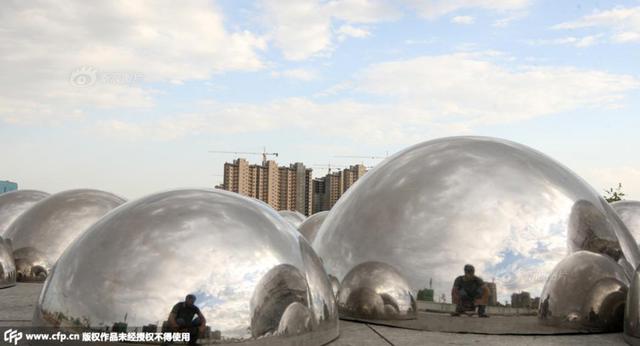
Karamay Kelamayi Yihaojing.
In summary, Karamay Kelamayi Yihaojing is not just a historical site; it embodies the spirit of innovation and resilience in the face of industrial challenges. Whether you’re a history buff, an art lover, or simply looking to explore Karamay’s unique offerings, this site is a must-visit destination.
Planning Your Visit: A Practical Guide
Practical Guide to Visiting Karamay Kelamayi Yihaojing (克拉玛依一号井)
Karamay, known as the “Oil City” of China, offers a unique blend of industrial heritage and stunning landscapes. One of the highlights of this city is the Karamay Kelamayi Yihaojing, or Karamay No. 1 Well, which is a significant landmark in the history of China’s petroleum industry. Here’s a comprehensive guide for visitors looking to explore this intriguing site.

Karamay Kelamayi Yihaojing.
Location and Access
Karamay No. 1 Well is situated in the Karamay District of Xinjiang Uyghur Autonomous Region, specifically on Victory Road. The site is easily accessible by car or public transportation. If you’re traveling from the city center, it’s a short drive and well-signposted.
Opening Hours
The site is open year-round, allowing visitors to explore the well and its surrounding attractions at their convenience. Check local listings for any special events or temporary closures.
Admission Fees
Visiting Karamay No. 1 Well is free of charge, making it an excellent stop for budget-conscious travelers. This allows you to enjoy the historical and artistic significance of the site without any entry fees.
What to Expect
Karamay No. 1 Well marks the birth of China’s first oil well, symbolizing the beginning of the country’s large-scale oil exploration. The site features a striking sculpture known as the “Big Oil Bubble,” which is an artistic representation of oil gushing from the earth. Standing at 15 meters tall and 28 meters in diameter, this sculpture captures the essence of the oil industry in Karamay.
Underneath the sculpture, visitors can explore a passage displaying the original equipment used at the well. This combination of industry and art creates a unique experience reflecting Karamay’s rich petroleum heritage.
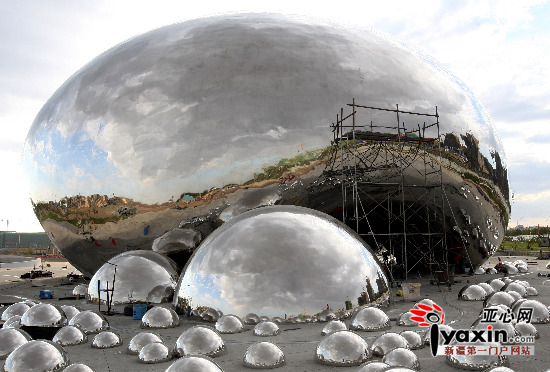
Karamay Kelamayi Yihaojing.
Nearby Attractions
While visiting Karamay No. 1 Well, consider exploring the following nearby attractions:
– Black Oil Mountain: A geological wonder showcasing natural oil seepage and offering a glimpse into the area’s oil-rich landscape.
– World Devil City: A scenic area featuring unique Yadan landforms, this site is renowned for its otherworldly landscapes and is perfect for photography.
– Karamay River Scenic Area: Ideal for leisurely walks or picnics, this area offers beautiful views of the river and surrounding landscapes.
Dining Options
After your visit, you may want to enjoy some local cuisine. Nearby dining options include:
– Xinjiang Cuisine Restaurants: Offering traditional dishes such as lamb skewers and hand-pulled noodles.
– Fast Food Chains: For a quick meal, familiar chains like KFC are also available.
Accommodation
If you plan to stay overnight, Karamay has several accommodation options ranging from budget hotels to more upscale establishments. Popular choices include:
– Karamay Longhua Hotel: Known for its comfortable rooms and convenient location.
– Karamay City Museum Hotel: A themed hotel that provides insights into the local culture.
Tips for Visitors
- Transportation: If you’re not driving, consider using local taxis or ride-sharing apps to navigate the city easily.
- Dress Appropriately: The region can experience extreme temperatures, so check the weather forecast and dress accordingly.
- Respect Local Culture: Be mindful of local customs and practices, especially in more traditional areas.
Conclusion
Karamay Kelamayi Yihaojing is not just a historical site; it’s a testament to the city’s transformation and development through the oil industry. With its unique attractions and rich cultural experience, a visit to this site promises to be both educational and enjoyable. Whether you’re a history enthusiast or simply looking to explore something different, Karamay offers a captivating journey into China’s industrial past.
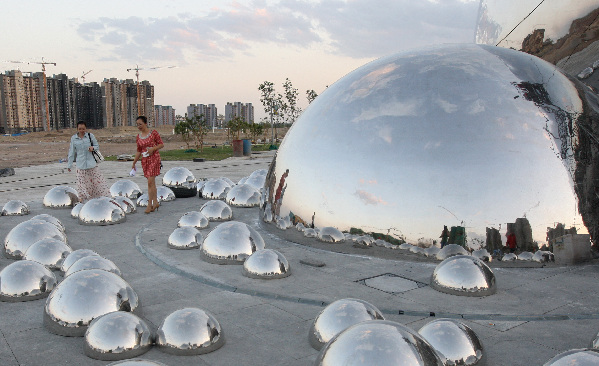
Karamay Kelamayi Yihaojing.
Tickets, Hours, and Booking
When planning your visit to Karamay Kelamayi Yihaojing (克拉玛依一号井), it’s essential to be informed about the ticketing options and guidelines to ensure a smooth experience.
Ticket Information
-
Admission Fee: Entry to Karamay Kelamayi Yihaojing is free of charge, making it an accessible destination for all visitors. This allows tourists to explore the historical significance of China’s first oil well without any financial barriers.
-
Opening Hours: The site is open year-round, allowing visitors to enjoy the unique landscape and learn about the rich history of the oil industry at any time. It is advisable to visit during daylight hours to fully appreciate the outdoor exhibits and surrounding scenery.
-
Reservations and Tours: While no advance reservations are required for general entry, guided tours are available and can enhance your understanding of the site’s historical context. It’s a good idea to check local tourism websites or inquire at tourist information centers for details about tour availability and scheduling.
-
Accessibility: The site is designed to be accessible to all visitors, including those with mobility challenges. The surrounding areas offer pathways that are suitable for wheelchairs and strollers.
-
Nearby Attractions: After visiting the oil well, consider exploring other nearby attractions, such as the Black Oil Mountain and the Karamay River Scenic Area, which showcase the natural beauty and cultural significance of the region.
This iconic landmark not only represents a pivotal moment in China’s industrial history but also serves as a remarkable site for tourists interested in the evolution of the oil industry. Enjoy your visit to this fascinating piece of Karamay’s heritage!
How to Get There
Navigating to and around Karamay and the iconic Karamay Kelamayi Yihaojing (克拉玛依一号井) offers various options for travelers keen to explore this unique oil city in Xinjiang, China.

Karamay Kelamayi Yihaojing.
Getting There
By Air:
Karamay Airport (KRY) serves as the main gateway for domestic flights. Regular flights connect Karamay with major cities like Urumqi, Beijing, and Shanghai. Once you arrive at the airport, you can opt for taxi services or pre-arranged shuttles to reach your accommodation or directly head to Karamay Kelamayi Yihaojing.
By Train:
Karamay is accessible via train services, with regular connections from Urumqi and other key cities in the region. The train station is centrally located, making it convenient to transfer to local transportation such as buses or taxis.
By Bus:
Long-distance buses are another popular option for reaching Karamay. Buses operate from various cities, including Urumqi and Hami, and are often an economical choice for travelers. The Karamay Bus Station provides connections to many destinations within Xinjiang.
Local Transportation
Once in Karamay, various transportation options are available to facilitate your exploration of the city and its attractions, including Karamay Kelamayi Yihaojing.
Taxis:
Taxis are widely available and relatively inexpensive. They can be hailed on the street or booked via local ride-hailing apps. Make sure to have your destination written in Chinese, as not all drivers speak English.

Karamay Kelamayi Yihaojing.
Public Buses:
Karamay has a network of public buses that cover most parts of the city, including stops at major attractions such as Karamay Kelamayi Yihaojing. Bus fares are low, making it a convenient option for budget travelers.
Bicycles and E-Scooters:
For the more adventurous, renting a bicycle or an electric scooter can provide a fun way to navigate the city at your own pace. Several rental stations can be found throughout Karamay.
Private Tours:
Many local tour operators offer guided tours that include transportation to various attractions, including Karamay Kelamayi Yihaojing. This option can be particularly useful for travelers wanting a comprehensive experience without the hassle of navigating public transport.
Accessibility
Karamay Kelamayi Yihaojing is conveniently located and accessible by all forms of local transport. The site is designed to accommodate visitors, with pathways and facilities for a comfortable visit. If you have specific accessibility needs, it is advisable to check in advance with local services to ensure a smooth experience.
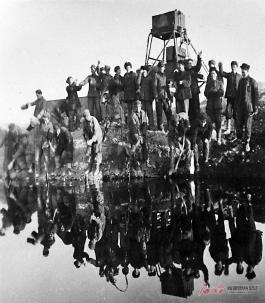
Karamay Kelamayi Yihaojing.
In summary, whether you’re arriving by air, train, or bus, and exploring via taxis, public transport, or rental options, Karamay is well-equipped to welcome visitors to its unique blend of industrial history and modern tourism.
Local Cuisine and Accommodation
When visiting Karamay’s iconic Yihao Well, immersing yourself in the local cuisine and finding comfortable accommodation will enhance your experience in this fascinating oil city.
Culinary Delights
Karamay offers a diverse range of dining options that reflect the rich culinary traditions of Xinjiang. Here are some noteworthy places to satisfy your cravings:
-
Cotton Bloom Restaurant (棉花绽放): Renowned for its Xinjiang dishes, this restaurant boasts a stellar rating of 5.0. Expect to savor local specialties like lamb skewers and hand-pulled noodles. Average meal prices hover around ¥102 per person. It is located just 3.1 kilometers from Yihao Well, making it a convenient stop.
-
Beiting Courtyard (北庭院子): For a taste of authentic regional flavors, this cozy eatery offers a variety of Xinjiang dishes at approximately ¥136 per person. Situated 3.6 kilometers away, it’s ideal for those looking to indulge in traditional fare.
-
KFC (准噶尔店): If you’re in the mood for something familiar, this fast-food option is available nearby. Priced around ¥41 per person, it provides a quick and convenient meal choice for travelers.
-
Local Food Stalls: For the adventurous eater, the streets around Yihao Well feature various food stalls. Here, you can sample street food such as roasted lamb and fried pastries, giving you a true taste of Karamay’s vibrant food culture.
Accommodation Options
Finding a suitable place to stay in Karamay can greatly enhance your visit. Here are a few top-rated hotels that provide comfort and convenience:

Karamay Kelamayi Yihaojing.
-
Karamay Longhua Hotel (克拉玛依龙华大酒店): This hotel is one of the most popular choices among travelers, offering modern amenities and excellent service. It’s well-located for easy access to various attractions, including Yihao Well.
-
Karamay Le Shang Boutique Hotel (克拉玛依乐尚精品酒店): Known for its stylish decor and hospitality, this boutique hotel provides a unique experience. Guests can enjoy comfortable rooms and a variety of services tailored to both leisure and business travelers.
-
Karamay Huati Business Hotel (克拉玛依华天商务宾馆): This hotel combines affordability with comfort, making it an excellent choice for budget-conscious travelers. It’s conveniently situated within the city, allowing easy exploration of local attractions.
-
Homestays: For a more intimate experience, consider staying at one of the local homestays. These accommodations often provide a chance to engage directly with the culture and lifestyle of Karamay’s residents, offering personalized hospitality that enhances your travel experience.
Whether you’re enjoying Xinjiang’s unique flavors or relaxing in comfortable accommodations, Karamay promises a memorable stay as you explore the historical significance of the Yihao Well and the surrounding landscapes.
Frequently Asked Questions
-
What is Karamay Kelamayi Yihaojing?
Karamay Kelamayi Yihaojing, also known as the First Oil Well of Karamay, is a historic site in Karamay City, Xinjiang, China. It marks the location of China’s first oil well, symbolizing the birth of the country’s first major oil field. -
How can I visit Karamay Kelamayi Yihaojing?
The site is open to visitors year-round. You can easily reach it by public transportation or taxi within Karamay. It’s advisable to check local transport options for convenience. -
Is there an admission fee to visit the site?
Yes, entry to Karamay Kelamayi Yihaojing is free of charge, making it an accessible destination for tourists and locals alike. -
What should I expect to see at Karamay Kelamayi Yihaojing?
Visitors can explore the iconic large oil bubble sculpture, which is designed to resemble oil bubbling from the ground. The area also features various exhibits related to the history of oil extraction and the development of the oil industry in China. -
Are there any amenities available for visitors?
Yes, the site includes pathways for walking, informational displays about the oil industry, and surrounding green spaces where visitors can relax and enjoy the scenery. -
What are the best times to visit Karamay Kelamayi Yihaojing?
The site can be visited at any time throughout the year. However, visiting during spring or autumn may provide a more pleasant climate for outdoor exploration. -
Are there other attractions near Karamay Kelamayi Yihaojing?
Yes, Karamay has several nearby attractions, including the Black Oil Mountain and the Karamay River Scenic Area, which offer stunning natural landscapes and further insights into the region’s oil heritage. -
Can I take photographs at Karamay Kelamayi Yihaojing?
Absolutely! Visitors are encouraged to take photographs at the site. The unique sculptures and historical significance provide excellent opportunities for capturing memorable moments.

Karamay Kelamayi Yihaojing.
Final Thoughts on Your Trip
Karamay’s Kelamayi Yihaojing stands as a remarkable testament to the city’s industrial heritage and its transformation into a vibrant tourist destination. As China’s first oil well, it symbolizes not only the birth of a major oil field but also the evolution of Karamay from a resource-driven town to a hub of cultural and ecological tourism. Visitors to the site can truly appreciate the unique blend of history and modern artistic expression, especially with the impressive oil bubble sculpture that captures the essence of the region’s oil legacy.
In recent years, Karamay has embraced a vision of sustainable tourism, offering diverse experiences that range from exploring the rich geological landscapes to engaging with the local culture. The integration of oil heritage into the tourism narrative has created a unique allure, attracting both domestic and international travelers eager to witness the beauty of the Gobi Desert and the innovative spirit of this modern city.
As you plan your visit to Karamay, let the stories of resilience and transformation inspire your journey. Whether you are drawn to the historical significance of Kelamayi Yihaojing or the breathtaking natural wonders that surround it, Karamay invites you to discover the captivating beauty of its landscapes and the warmth of its people. Embrace the opportunity to explore this once-remote region, where the past and present converge to create an unforgettable travel experience.

Karamay Kelamayi Yihaojing.
